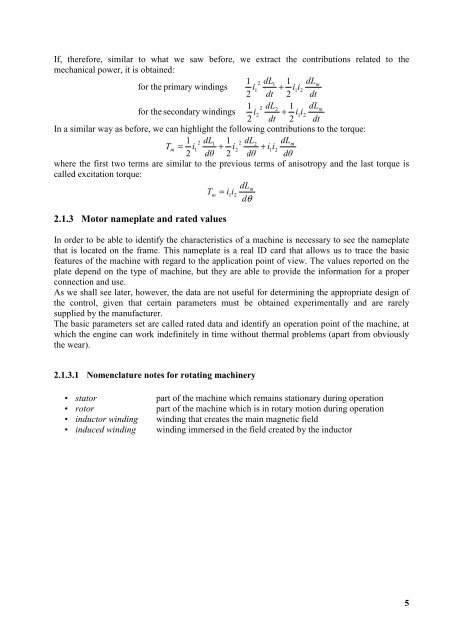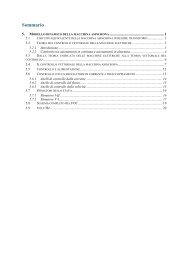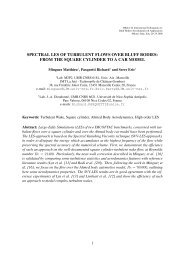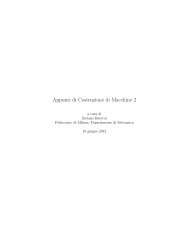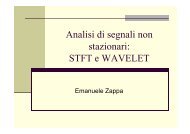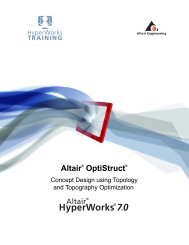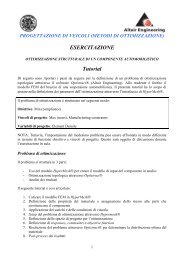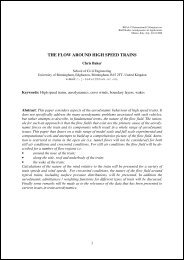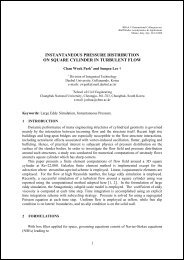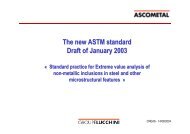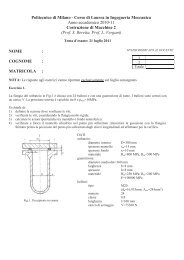Summary 2. The electromechanical energy conversion
Summary 2. The electromechanical energy conversion
Summary 2. The electromechanical energy conversion
Create successful ePaper yourself
Turn your PDF publications into a flip-book with our unique Google optimized e-Paper software.
If, therefore, similar to what we saw before, we extract the contributions related to the<br />
mechanical power, it is obtained:<br />
1 2 dL1<br />
1 dLm<br />
for the primary windings i1<br />
+ i1i2<br />
2 dt 2 dt<br />
1 2 dL2<br />
1 dLm<br />
for the secondary windings i2<br />
+ i1i2<br />
2 dt 2 dt<br />
In a similar way as before, we can highlight the following contributions to the torque:<br />
1 2 dL1<br />
1 2 dL2<br />
dLm<br />
Tm = i1<br />
+ i2<br />
+ i1i2<br />
2 dθ 2 dθ dθ<br />
where the first two terms are similar to the previous terms of anisotropy and the last torque is<br />
called excitation torque:<br />
dLm<br />
Tm = i1i2<br />
dθ<br />
<strong>2.</strong>1.3 Motor nameplate and rated values<br />
In order to be able to identify the characteristics of a machine is necessary to see the nameplate<br />
that is located on the frame. This nameplate is a real ID card that allows us to trace the basic<br />
features of the machine with regard to the application point of view. <strong>The</strong> values reported on the<br />
plate depend on the type of machine, but they are able to provide the information for a proper<br />
connection and use.<br />
As we shall see later, however, the data are not useful for determining the appropriate design of<br />
the control, given that certain parameters must be obtained experimentally and are rarely<br />
supplied by the manufacturer.<br />
<strong>The</strong> basic parameters set are called rated data and identify an operation point of the machine, at<br />
which the engine can work indefinitely in time without thermal problems (apart from obviously<br />
the wear).<br />
<strong>2.</strong>1.3.1 Nomenclature notes for rotating machinery<br />
• stator<br />
• rotor<br />
• inductor winding<br />
• induced winding<br />
part of the machine which remains stationary during operation<br />
part of the machine which is in rotary motion during operation<br />
winding that creates the main magnetic field<br />
winding immersed in the field created by the inductor<br />
5


